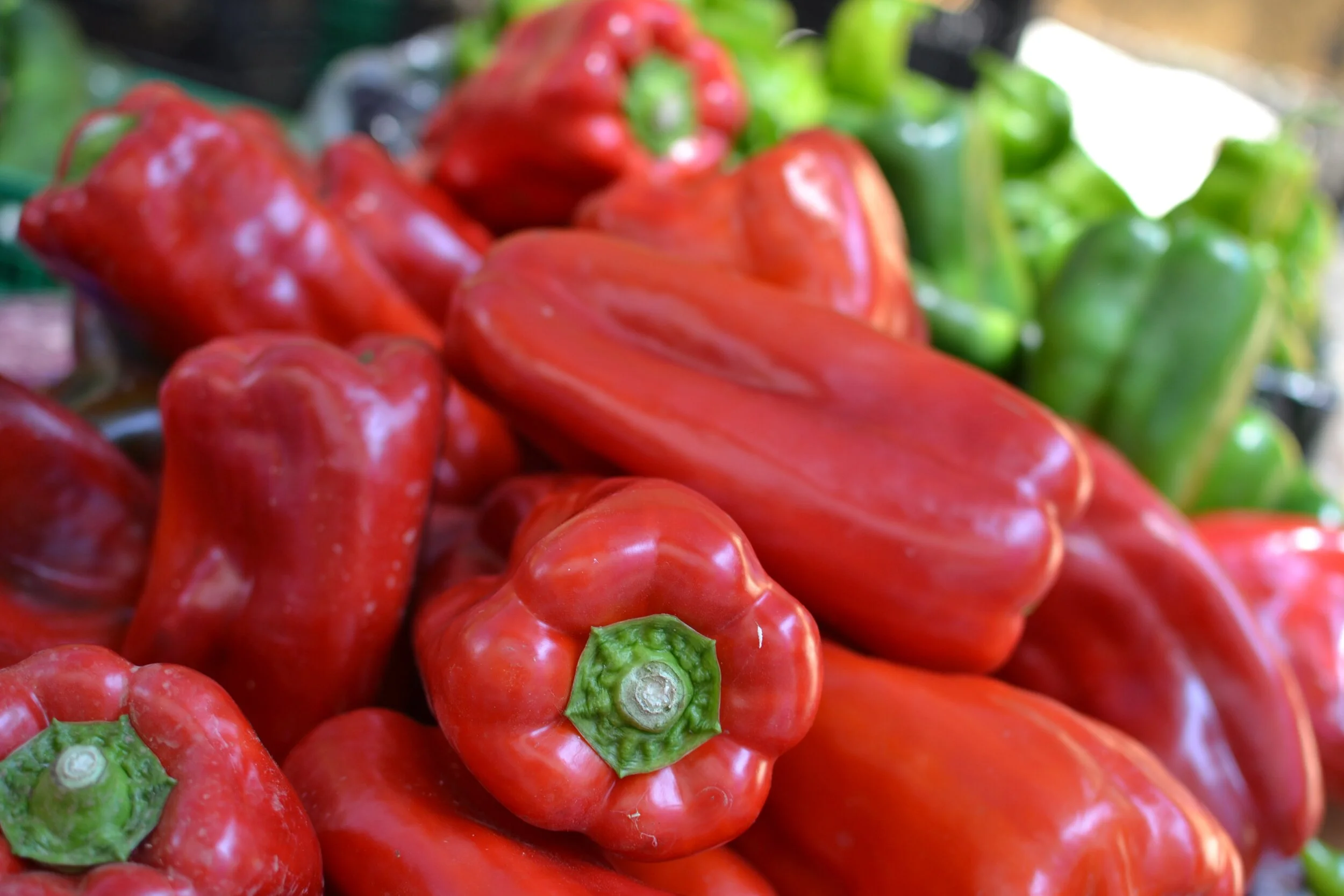PEPPER
Peppers are sweet or hot, big or small. There’s a pepper for everyone. Much like tomatoes, peppers are true perennials only in frost-free climates. With a little extra care and attention, they can be grown indoors through the winter. Their compact nature makes them perfect for container growing. Given enough sun- light, peppers can also be picked throughout the year.
VarietiEs
Bell Peppers are the most common sweet pepper. Other sweet staples include Cornitos and Sprinter. For a twist on the traditional, check out Oda, a brilliant purple pepper with stark white flesh. A sweet cherry pepper called Red Cheese Pepper makes a great snack. Cubanelle Peppers are long, thin, and look like they should be hot, but they’re not. Italian frying peppers like Jimmy Nordello are best cooked in olive oil but taste great raw as well. If sweet isn’t your thing, try hot peppers, like Jalapenos, Chipotle or, if you dare, Ghost Peppers. Spicy peppers heat up even more in warm climates, are easier to grow than Bell Peppers, and thrive almost anywhere. As with every pepper, they cannot survive cold winters unless brought inside.
WHERE PEPPERS THRIVE
Regional compatibility
Peppers grow best in southern regions with long, hot summers. In northern climates, it’s a race against the clock since peppers tend to ripen in late September. Start seeds or cuttings inside on a heat mat to give peppers a chance to ripen earlier.
Optimal sOIL & sun
Sandy, loose soils packed with compost work well. Peppers can tolerate slightly acidic soil.
Peppers love the heat of the sun, so plant them where they’ll get six to eight hours of it a day.
RESILIENCE
Peppers are heat- and drought-tolerant, making them an excellent choice for sunny, dry gardens. Spicy peppers, in particular, thrive in these conditions and grow hotter because of it. They do not appreciate cold or soggy soil. If peppers get too much water, their leaves wilt away and the fruit drops off. They can’t tolerate frost, which kills them.
PLANTING
FROM SEED
Pepper seeds won’t germinate in cold soil, so sow them about one-quarter inch deep in pots or cell flats and keep them warm on a heat mat. When three true leaves appear, transplant the seedlings into larger pots. Move them into your garden after the last frost. To ease the transition, set out your plants on warm spring days and move them back inside during cool nights. This process, known as hardening-off, prevents your peppers from being shocked when you finally plant them outside. Plant seedlings 12 to 18 inches apart and, if you want to be extra cautious, protect them against the chill by draping them with a row cover.
Best time of year to plant
Start pepper seeds indoors six to eight weeks before your last frost.
COMPANION PLANTS
Peppers and basil grow well together because they thrive in the same growing conditions. Peppers also benefit from growing among taller plants, like okra, which provide a natural wind- break for these brittle plants.
Growing
Peppers can get a bit top heavy so you might need to support leaning plants with a few bamboo stakes. I make an X with the stakes and place it on the leaning side to keep the plant from tipping over. Since they have shallow roots, peppers will rip right out of the ground if they fall over.
WATERING
Peppers need about an inch of water a week. Make sure to water them from the time they flower until the peppers ripen because thirsty plants will drop fruit and wilt. But don’t overdo it. Overwatered plants can drop leaves and bear discolored fruit.
Weeding
Keep your plants free of weeds to limit pests. Mulching helps keep weeds at bay.
Fertilizing
Peppers need phosphorus and calcium to grow big, blemish-free fruits, so add bone meal to replenish the soil when you see the first flower bud.
CHALLENGES
Peppers can easily fall victim to a host of fungal diseases. Take care to water the soil and not the leaves.
Pests and disease. Pepper maggots spend their lives inside the fruit after the adult flies lay their eggs. Once hatched, the maggots eat out and rot the insides. They’re hard to control but the adults are attracted to the color yellow, so it can help to hang yellow sticky traps in your garden from late May to early June.
Blight is a fungal disease that can affect both young and mature plants. There’s little you can do about blight once plants have it, but removing infected leaves can at least prevent the disease from invading the stems. Be careful not to compost the infected leaves so it doesn’t spread.
Blossom end rot occurs when there’s either a deficiency of calcium in the soil or large variations in soil moisture. Black and brown leathery patches appear at the blossom end of fruits. Infected fruit is still delicious—just cut out the brown spots.
Harvest
All peppers start off green and change color as they ripen. Harvest them right away or wait for the color change for a sweeter pepper. Use scissors to harvest your crop instead of pulling off the peppers by hand. The branches are brittle and easily break away from the plant.
STORE
Whole peppers keep their flavor and texture best when stored at room temperature. They’ll keep for up to a week. Refrigerate cut peppers to keep them fresh for up to two weeks.
Preserve
You can freeze raw or roasted peppers for up to 10 months.













